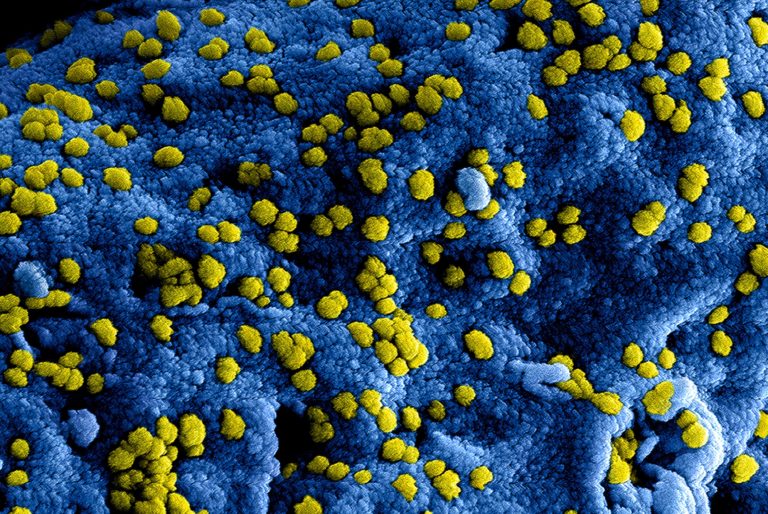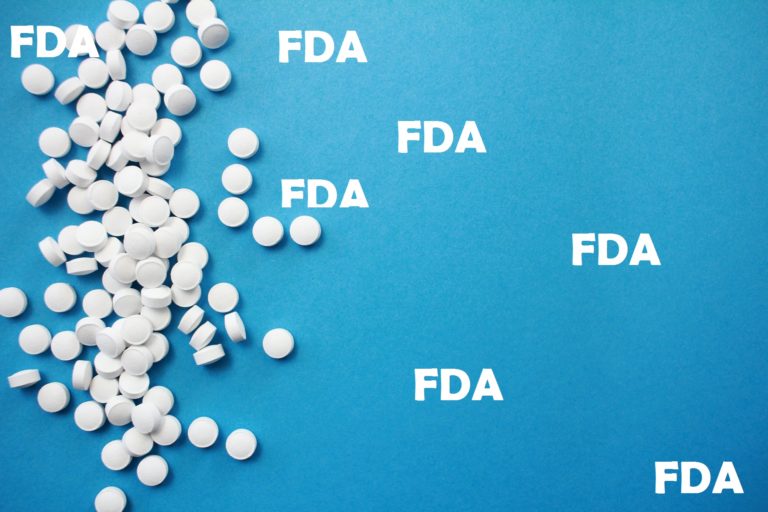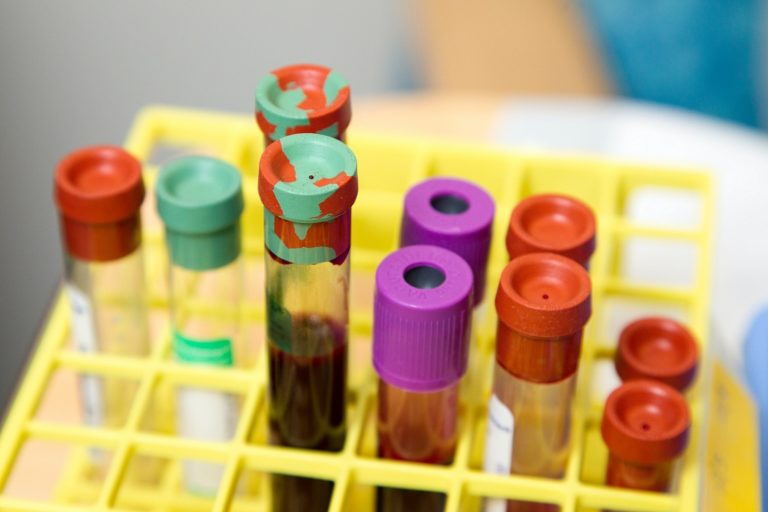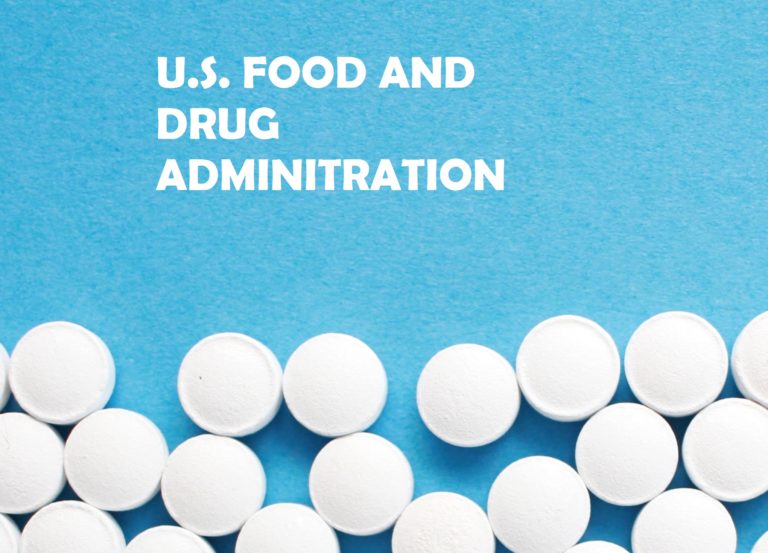May 20, 2020: “AstraZeneca and MSD announced that Lynparza (olaparib) has been approved in the US for patients with homologous recombination repair (HRR) gene-mutated metastatic castration-resistant prostate cancer (mCRPC).
The approval by the US FDA was based on results from the Phase III PROfound trial, which were published in The New England Journal of Medicine.
Prostate cancer is the second-most common cancer in men and despite an increase in the number of available therapies for men with mCRPC, five-year survival remains low.
HRR gene mutations occur in approximately 20-30% of patients with mCRPC.
Maha Hussain, one of the principal investigators of the PROfound trial and deputy director of the Robert H. Lurie Comprehensive Cancer Center of Northwestern University, said: “Prostate cancer has lagged behind other solid tumours in the era of precision medicine.
I am thrilled by the approval of Lynparza which now brings a molecularly targeted treatment to men with HRR gene-mutated metastatic castration-resistant prostate cancer in the US. The PROfound trial was an international effort and I want to thank the patients, their families, the investigators and their teams involved in making it possible.”
Dave Fredrickson, Executive Vice President, Oncology Business Unit, said: “Today marks the first approval for Lynparza in prostate cancer.
In the PROfound trial, Lynparza more than doubled the median radiographic progression-free survival and is the only PARP inhibitor to improve overall survival, versus enzalutamide or abiraterone for men with BRCA or ATM mutations. These results further establish that genomic testing for HRR mutations should be a critical step for the diagnosis and determination of treatment options for men with advanced prostate cancer.”
Roy Baynes, Senior Vice President and Head of Global Clinical Development, Chief Medical Officer, MSD Research Laboratories, said, “Lynparza is the only PARP inhibitor approved with Phase III data for men with HRR gene-mutated metastatic castration-resistant prostate cancer.
This approval highlights the importance of genomic testing to help identify treatment options for men in this patient population. We are proud to work in collaboration with AstraZeneca toward our overall goal of improving outcomes for patients.”
The primary endpoint of the trial was radiographic progression-free survival (rPFS) in men with BRCA1/2 or ATM gene mutations, a subpopulation of HRR gene mutations. Results showed Lynparza reduced the risk of disease progression or death by 66% (equal to a hazard ratio of 0.34; p-value <0.0001) and improved rPFS to a median of 7.4 months versus 3.6 months with enzalutamide or abiraterone.
Lynparza alsoshowed an rPFS benefit in the overall HRR gene-mutated trial population, a key secondary endpoint, and reduced the risk of disease progression or death by 51% (equal to a hazard ratio of 0.49; p-value <0.0001) and improved rPFS to a median of 5.8 months versus 3.5 months with enzalutamide or abiraterone.
Related News: Lynparza approved in the US as 1st-line maintenance treatment with bevacizumab for HRD-positive advanced ovarian cancer
Lynparza demonstrated overall survival benefit in Phase III PROfound trial for BRCA1/2 or ATM-mutated metastatic castration-resistant prostate cancer
Lynparza recommended by FDA advisory committee for 1st-line maintenance treatment of germline BRCA-mutated metastatic pancreatic cancer, not Progressed on Platinum-Based Chemotherapy
Additional results from the PROfound trial announced on 24 April 2020 demonstrated a statistically significant and clinically meaningful improvement in the key secondary endpoint of overall survival (OS) with Lynparza versus enzalutamide or abiraterone in men with mCRPC and BRCA1/2 or ATM gene mutations.
Results showed Lynparza reduced the risk of death by 31% (equal to a hazard ratio of 0.69; p-value=0.0175) and improved OS to a median of 19.0 months versus 14.6 months with enzalutamide or abiraterone.
The full indication is for the treatment of adult patients with deleterious or suspected deleterious germline or somatic HRR gene-mutated mCRPC who have progressed following prior treatment with enzalutamide or abiraterone. Patients are to be selected for treatment based on an FDA-approved companion diagnostic test for Lynparza.
Lynparza is currently under regulatory review in the EU and other jurisdictions as a treatment for men with HRR gene-mutated mCRPC.
AstraZeneca and MSD are testing Lynparza in additional trials in metastatic prostate cancer including the ongoing Phase III PROpel trial as a 1st-line treatment in combination with abiraterone acetate for patients with mCRPC versus abiraterone acetate alone.
Financial considerations
Following this approval for Lynparza in the US, AstraZeneca will receive a regulatory milestone payment from MSD of $35m, anticipated to be booked as Collaboration Revenue by the Company during the second quarter of 2020.
Metastatic castration-resistant prostate cancer
Prostate cancer is the second-most common cancer in men, with an estimated 1.3 million new cases diagnosed worldwide in 2018 and is associated with a significant mortality rate.1 Development of prostate cancer is often driven by male sex hormones called androgens, including testosterone.
mCRPC occurs when prostate cancer grows and spreads to other parts of the body despite the use of androgen-deprivation therapy to block the action of male sex hormones.
Approximately 10-20% of men with advanced prostate cancer will develop CRPC within five years, and at least 84% of these will have metastases at the time of CRPC diagnosis.
Of men with no metastases at CRPC diagnosis, 33% are likely to develop metastases within two years.3 Despite an increase in the number of available therapies for men with mCRPC, five-year survival remains low.3
HRR gene mutations
HRR gene mutations occur in approximately 20-30% of patients with mCRPC.
HRR genes allow for accurate repair of damaged DNA in normal cells.
HRR deficiency (HRD) interferes with normal cell DNA repair mechanisms and can result in normal cell death. This is different in cancer cells, where a mutation in HRR pathways leads to abnormal cell growth and therefore cancer.
The inability to properly repair DNA damage leads to genomic instability and contributes to cancer aetiology.
HRD is a well-documented target for PARP inhibitors, such as Lynparza. PARP inhibitors block a rescue DNA damage repair mechanism by trapping PARP bound to DNA single-strand breaks which leads to replication fork stalling causing their collapse and the generation of DNA double-strand breaks, which in turn lead to cancer cell death.
PROfound
PROfound is a prospective, multicentre, randomised, open-label, Phase III trial testing the efficacy and safety of Lynparza versus enzalutamide or abiraterone in patients with mCRPC who have progressed on prior treatment with enzalutamide or abiraterone and have a qualifying tumour mutation in BRCA1/2, ATM or one of 12 other genes involved in the HRR pathway.
The trial was designed to analyse patients with HRRm genes in two cohorts: the primary endpoint was in those with mutations in BRCA1/2 or ATM genes and then, if Lynparza showed clinical benefit, a formal analysis was performed of the overall trial population of patients with HRRm genes (BRCA1/2, ATM, CDK12 and 11 other HRRm genes; key secondary endpoint).
In the US, patients are selected for treatment with Lynparza based on the following FDA-approved companion diagnostics:
- FoundationOne CDX: to identify patients with HRR-gene alterations in prostate tumour tissue. FoundationOne is a registered trademark of Foundation Medicine, Inc.
- BRACAnalysis CDX: a germline test to identify patients with BRCA1 and BRCA2 gene mutations. Myriad Genetics, Inc. owns and commercialises BRACAnalysis CDX.
Lynparza
Lynparza is a first-in-class PARP inhibitor and the first targeted treatment to block DNA damage response (DDR) in cells/tumours harbouring a deficiency in homologous recombination repair, such as mutations in BRCA1 and/or BRCA2.
Inhibition of PARP with Lynparza leads to the trapping of PARP bound to DNA single-strand breaks, stalling of replication forks, their collapse and the generation of DNA double-strand breaks and cancer cell death. Lynparza is being tested in a range of PARP-dependent tumour types with defects and dependencies in the DDR pathway.
Lynparza is currently approved in a number of countries, including those in the EU, for the maintenance treatment of platinum-sensitive relapsed ovarian cancer.
It is approved in the US, the EU, Japan, China, and several other countries as 1st-line maintenance treatment of BRCA-mutated advanced ovarian cancer following response to platinum-based chemotherapy.
It is also approved in the US, Japan, and a number of other countries for germline BRCA-mutated, HER2-negative, metastatic breast cancer, previously treated with chemotherapy; in the EU, this includes locally advanced breast cancer.
Lynparza is approved in the US and several other countries for the treatment of germline BRCA-mutated metastatic pancreatic cancer.
Regulatory reviews are underway in several jurisdictions for ovarian, breast, pancreatic and prostate cancers.
Lynparza, which is being jointly developed and commercialised by AstraZeneca and MSD, has been used to treat over 30,000 patients worldwide.
Lynparza has the broadest and most advanced clinical trial development programme of any PARP inhibitor, and AstraZeneca and MSD are working together to understand how it may affect multiple PARP-dependent tumours as a monotherapy and in combination across multiple cancer types.
Lynparza is the foundation of AstraZeneca’s industry-leading portfolio of potential new medicines targeting DDR mechanisms in cancer cells.”
https://www.astrazeneca.com/content/astraz/media-centre/press-releases/2020/lynparza-approved-in-the-us-for-hrr-gene-mutated-metastatic-castration-resistant-prostate-cancer.html












